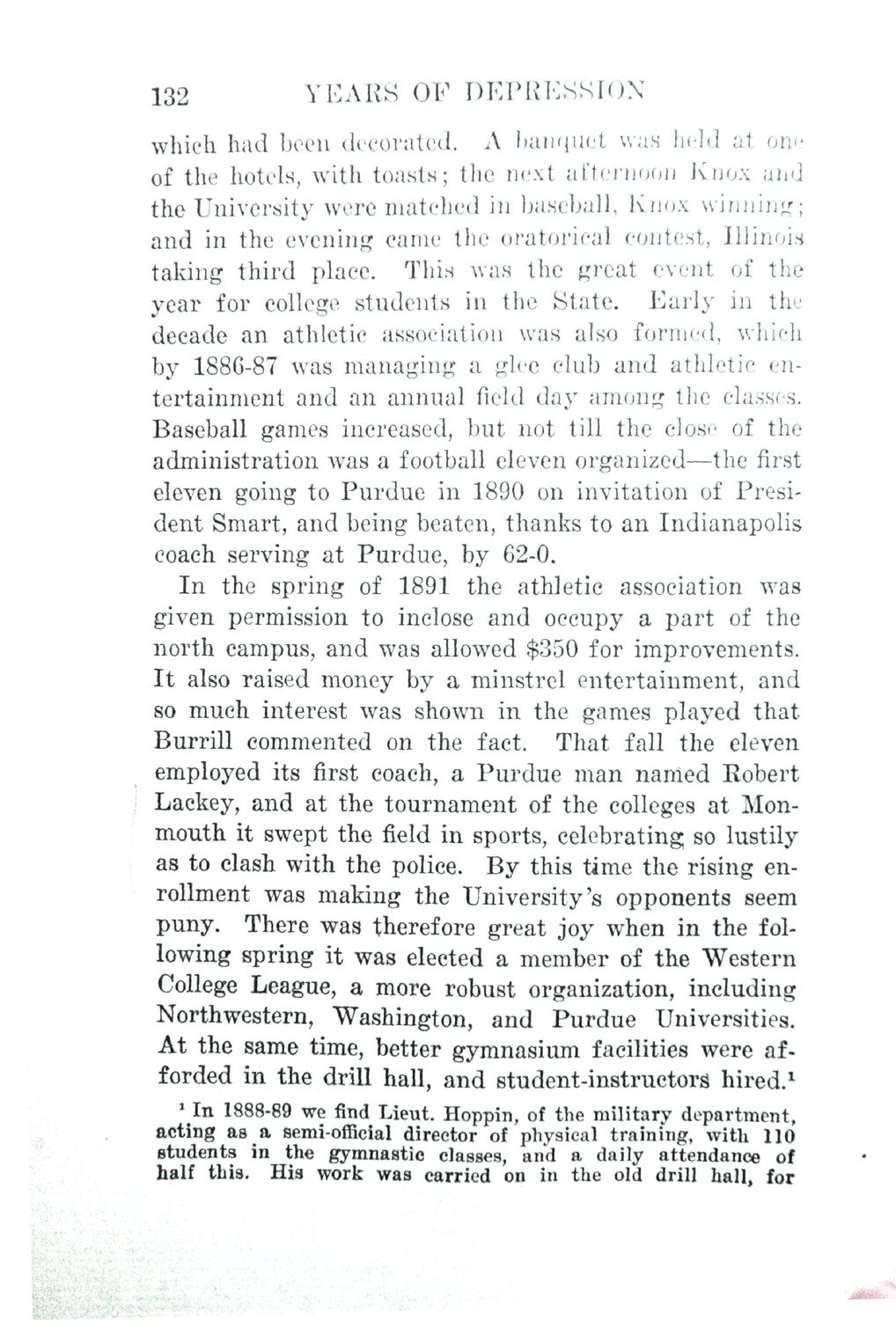| |
| |
Caption: Book - History of the University (Nevins)
This is a reduced-resolution page image for fast online browsing.

EXTRACTED TEXT FROM PAGE:
132 YEARS OF DEPRESSION which had been decorated. A banquet was held at one of the hotels, with toasts; the next afternoon Knox and the University were matched in baseball, Knox winning; and in the evening came the oratorical contest, Illinois taking third place. This was the great event of the year for college students in the State. . Early in the decade an athletic association was also formed, which by 1886-87 was managing a glee club and athletic entertainment and an annual field day among the classes. Baseball games increased, but not till the close of the administration was a football eleven organized—the first eleven going to Purdue in 1890 on invitation of President Smart, and being beaten, thanks to an Indianapolis coach serving at Purdue, by 62-0. In the spring of 1891 the athletic association was given permission to inclose and occupy a part of the north campus, and was allowed $350 for improvements. It also raised money by a minstrel entertainment, and so much interest was shown in the games played that Burrill commented on the fact. That fall the eleven employed its first coach, a Purdue man named Robert Lackey, and at the tournament of the colleges at Monmouth it swept the field in sports, celebrating; so lustily as to clash with the police. By this time the rising enrollment was making the University's opponents seem punyvg There was therefore great joy when in the following spring it was elected a member of the Western College League, a more robust organization, including Northwestern, Washingtonj and Purdue Universities. At the same time, better gymnasium facilities were afforded in the drill hall, and student-instructors hired.1 In 1888-89 we find Lieut. Hoppin, of the military department, acting as a semi-official director of physical training, with 110 students in the gymnastic classes, and a daily attendance of half this. His work was carried on in the old drill hall, for 1
| |